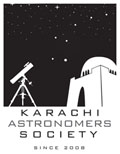It is a dream of every Astro-Photographer to capture the GRS once. The great red spot of planet Jupiter. During a night observation on November 2, 2013 my dream came true.
The Great Red Spot (GRS) is a persistent anticyclonic storm, 22° south of Jupiter’s equator; Earth observations establish a minimum storm lifetime of, variously, 183 years to possibly 348 years. The GRS rotates anticlockwise, with a period of about six Earth days or 14 Jovian days.
Great Red Spot captured by me on Saturday Nov 2, 2013.
The GRS rotates anticlockwise, with a period of about six Earth days or 14 Jovian days. Its dimensions are 24–40,000 km west–to–east and 12–14,000 km south–to–north. The spot is large enough to contain two or three planets the size of Earth. At the start of 2004, the Great Red Spot had approximately half the longitudinal extent it had a century ago, when it was 40,000 km in diameter. At the present rate of reduction it could potentially become circular by 2040, although this is unlikely because of the distortion effect of the neighboring jet streams. It is not known how long the spot will last, or whether the change is a result of normal fluctuations.
It is not known exactly what causes the Great Red Spot’s reddish color. Theories supported by laboratory experiments suppose that the color may be caused by complex organic molecules, red phosphorus, or yet another sulfur compound. The Great Red Spot (GRS) varies greatly in hue, from almost brick-red to pale salmon, or even white. The reddest central region is slightly warmer than the surroundings, which is the first evidence that the Spot’s color is affected by environmental factors.

